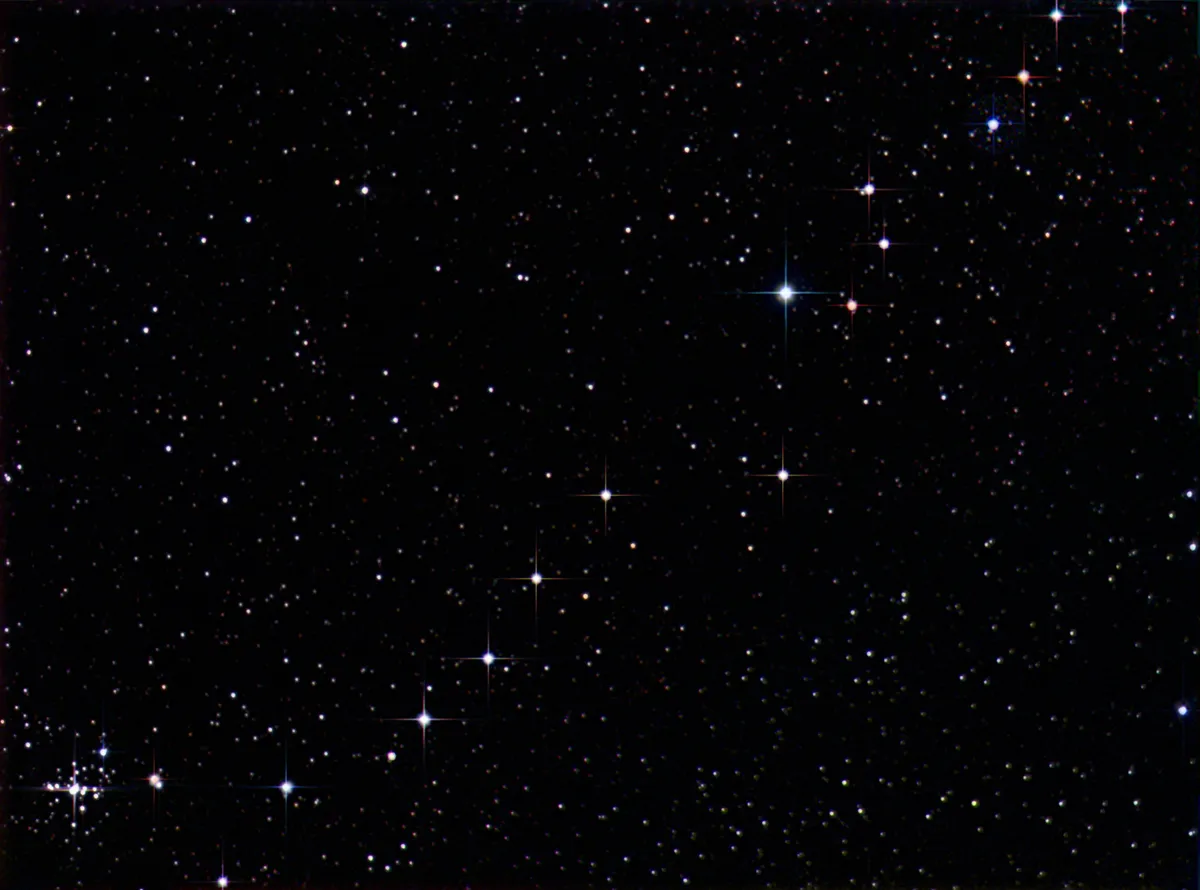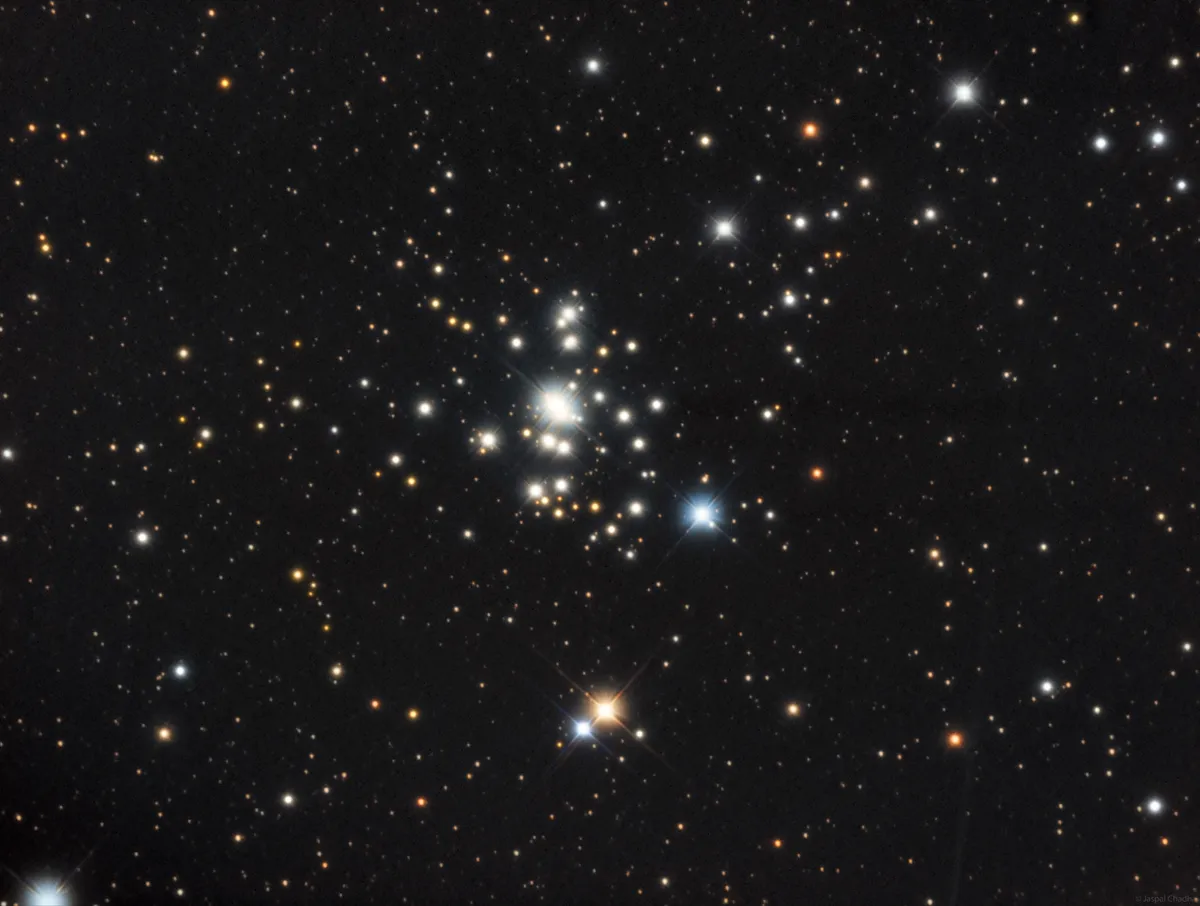Camelopardalis is a constellation that can be seen all year round from the Northern Hemisphere.
Representing a giraffe, it sits between Polaris (Alpha (α) Ursae Minoris) and Capella (Alpha (α) Aurigae).
The constellation's brightest star is Beta Camelopardalis, which is actually a double star.

Perhaps the most famous target in Camelopardalis is Kemble's Cascade, an asterism – an informal star pattern – of over 20 stars with open star cluster NGC 1502 at one end.
And there are plenty of other deep-sky objects to be found within the constellation's boundaries. Here are six for you to have a go at locating.
For help finding them, download our Camelopardalis deep-sky chart (PDF)

1 – Collinder 464
Our first target in Camelopardalis is located one third of the way along the line from Polaris to Capella and fittingly is rather indistinct too.
Collinder 464 is an open cluster that appears as a sparse collection of sixth- and seventh-magnitude stars centred around the fifth-magnitude variable BN Camelopardalis. Using a low power, it’s just about possible to visualise this grouping of blue, white and orange stars strewn over a 2° area.
2 – NGC 1560

This is a mag. +11.5 galaxy 3.6° southwest of BN Camelopardalis. Navigating this area is challenging, not only because of the faintness of Camelopardalis – its brightest star is mag. +4.0 Beta (β) Camelopardalis – but also its proximity to the North Celestial Pole. For equatorially mounted scopes, this can be too tricky to navigate manually.
Through the eyepiece of a 250mm instrument, this low-surface-brightness galaxy appears as a faint elongated smudge 4 x 1 arcminutes in size, with no distinct brightening of the core. A 300mm scope hints at extensions to this sideways-on spiral’s length, but reveals little in the way of structure.
3 – NGC 1961

To locate the intermediate spiral galaxy NGC 1961 (Arp 184), we recommend finding mag. +4.3 Alpha (α) Camelopardalis 5.8° south-southeast of NGC 1560. If you didn’t find our second target, Alpha is the brightest star near the mid-point of the line between Polaris and Capella. NGC 1961 is 5.5° northeast of Alpha.
This is tough through a 150mm scope, but a 250mm scope reveals it as a distinct 2 x 1-arcminute ellipse, with little apparent texture. A 300mm scope shows an object roughly twice as large with a hint of mottling over the core. Located 200 million lightyears away, long-exposure photos show the galaxy to be significantly distorted, despite there being no evidence of what caused the distortions.
4 – IC 342

IC 342, another intermediate spiral galaxy, appears face-on to us. Known as the Hidden Galaxy, it’s quite large at 18 x 17 arcminutes and, on paper, is bright at mag. +9.1. It’s relatively easy to see as a large, faint patch through smaller scopes, midway between mag. +4.6 Gamma (γ) Camelopardalis and mag. +4.4 BE Camelopardalis.
Through larger scopes, several foreground stars are evident. A 300mm scope shows a fairly bright centre that lightens to a star-like core. Lying 10.7 million lightyears away, IC 342’s nickname comes from its brightness being dimmed by dusty regions in our own Galaxy. If these weren’t present, you’d be able to see it with the naked eye!
5 – NGC 1502

Open cluster NGC 1502 lies 3.7° southeast of HIP 17884, but it’s easier to find by starting at the binocular asterism Kemble’s Cascade. This is a linear string of stars almost 2.5° in length, easily located by extending the line from Caph (Beta (β) Cassiopeiae) through Segin (Epsilon (ε) Cassiopeiae) (not shown on chart) for the same distance again.
The cascade is sometimes described as resembling a waterfall of stars; the open cluster NGC 1502 is the ‘splash pool’ at the southeastern end. The 8-arcminute cluster has an integrated magnitude of +5.7 and contains around 60 stars. A 250mm scope reveals about a quarter of this number, 300mm increasing the count to nearly 40.
6 – NGC 1501

For our final target, simply head 1.4° south from NGC 1502. Planetary nebula NGC 1501 is a mag. +11.5 object that’s 1 arcminute or so in diameter. A larger instrument is recommended here, using a medium to high power. A 250mm scope reveals it as a bright, round object, but its central star may elude you. A 300mm will show the mag. +14.5 central star, as well as revealing the nebula to have an annular appearance with a gently shaded central ‘hole’.
NGC 1501 is also known as the Oyster or, perhaps more fittingly, the Camel’s Eye. It’s estimated to be 4,240 lightyears away and physically to be around 1 lightyear in diameter.
What are your favourite targets in Camelopardalis? Let us know by emailing contactus@skyatnightmagazine.com

